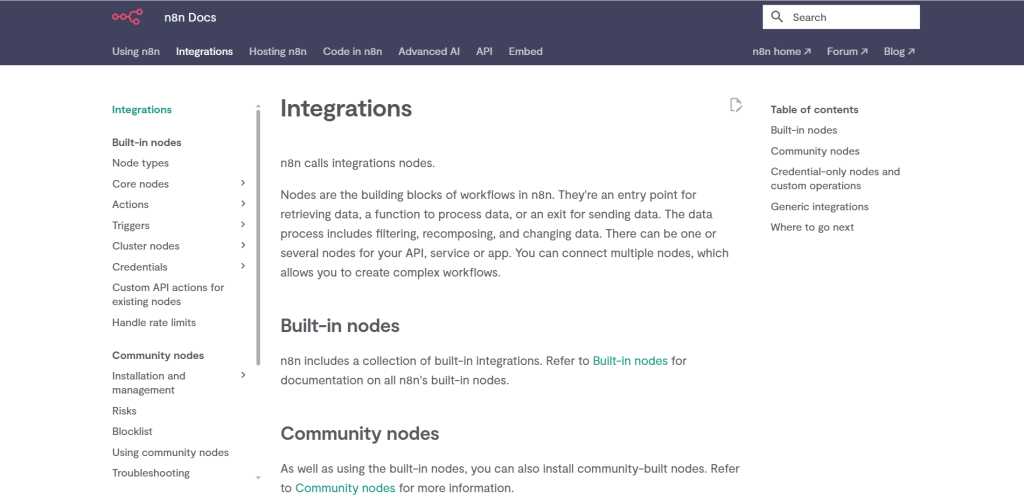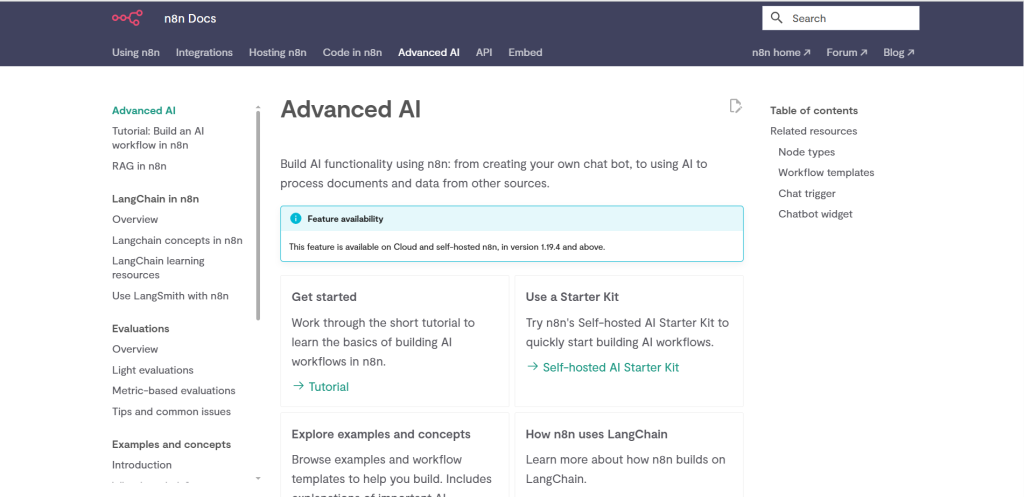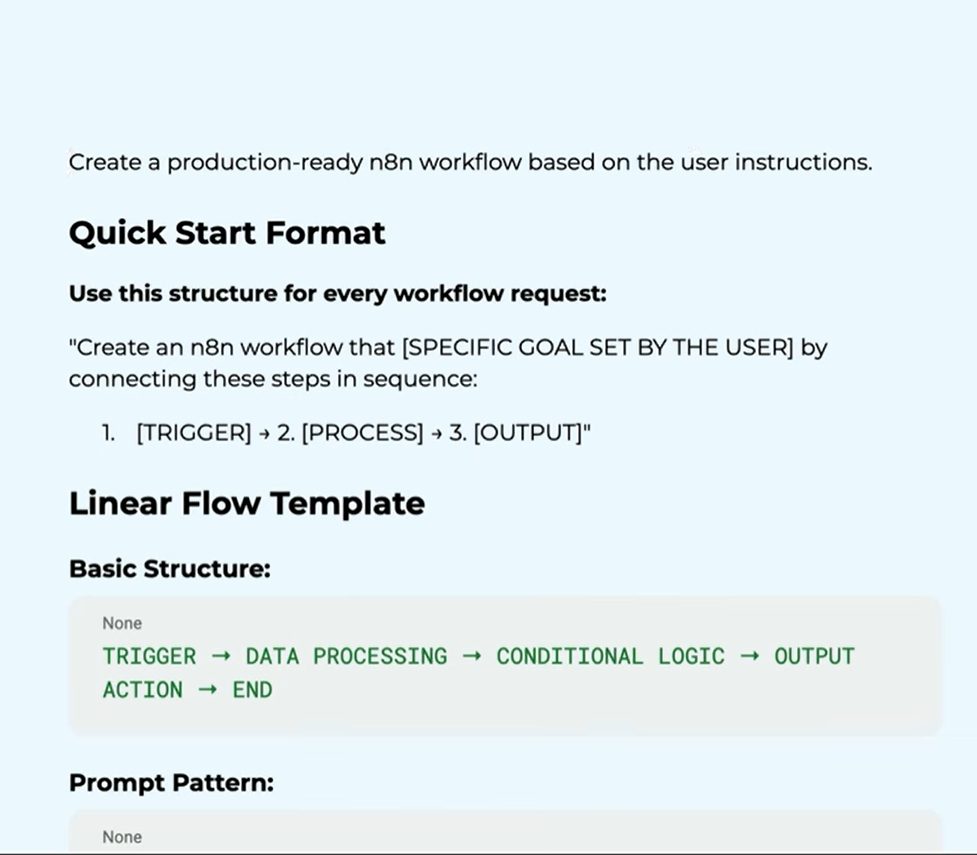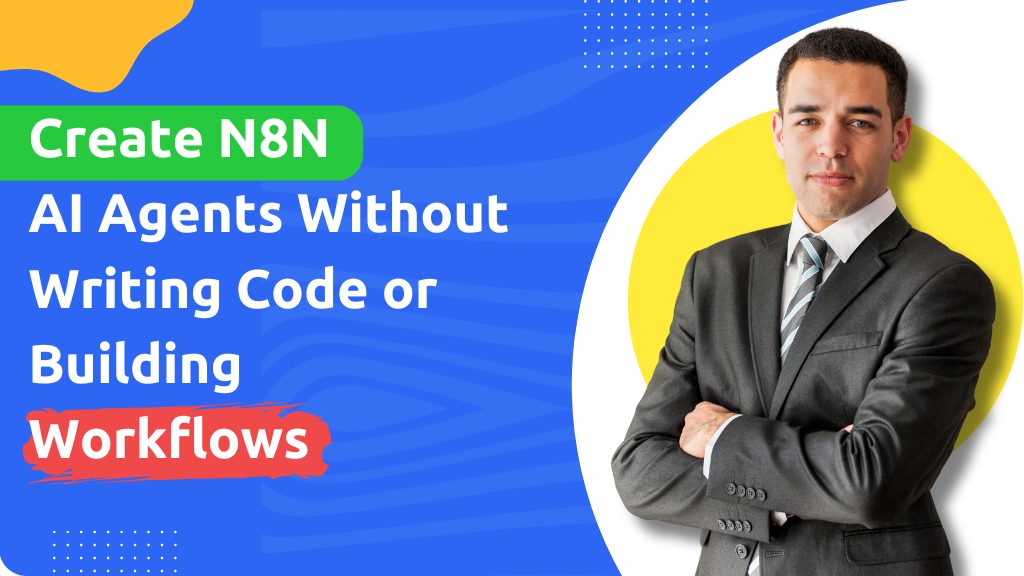Ever wanted to create a fully functional AI agent in n8n without touching a single line of code—or even building a complex workflow manually?
You’re about to learn exactly how.
With the right setup, a few well-structured prompts, and a bit of cloud magic, you can build a near-production-ready AI agent using n8n, Claude, and prebuilt templates—no engineering background required.
In this guide, I’ll walk you through the exact steps to set up your AI agent with n8n using a ready-to-go JSON workflow and AI-powered project instructions. This method works perfectly even if you’ve never used n8n or coded a line in your life.
What You’ll Need Before You Start
- n8n cloud account
- Claude (Anthropic) or ChatGPT for prompt crafting. (For this guide we will be using Claude)
- Two PDF files (AI documentation + core node guide) which you will create from the below steps
- A working Google Drive account
- Some patience, curiosity, and a cup of coffee ☕
Step 1: Gather the Core Nodes Resources
Before you start, the first thing that you need to train your AI agent is on the documentation of n8n so it can write code for JSON files that we will eventually upload in the n8n platform.
We will be going ahead and copy the n8n documentation and resources to create a PDF document that we will eventually upload to our AI agent to train.
To give your AI agent the context it needs, you’ll need to upload two key documents:
1. n8n Nodes Guide (~206 pages, includes core, triggers, credentials, etc.)
You can compile them yourself from here. These include:
- Node types
- Core nodes
- Actions
- Triggers
- Cluster nodes
- Credentials

2. Advanced AI Documentation:
You will need an advanced AI documents that consist of 72 pages from n8n Advanced AI. Once ready, upload both PDFs to your Google Drive or Google Docs for easy access.

Step 2: Write Your System Instructions
AI agents are only as good as the instructions you give them. These are called system prompts—and they guide how your agent behaves. So here it system prompt where all the magic lies.
SYSTEM PROMPT
“ Create a comprehensive master template system for generating production-ready n8n workflows from natural language descriptions. The template should include a primary structure framework for defining objectives, detailed trigger specifications for different event types, data flow architecture with input/processing/output stages, technical requirements covering authentication and error handling, validation criteria with measurable outcomes, specialized sub-templates for multi-system integrations and data pipelines, quality amplifiers with specific field mappings and expression syntax, production readiness markers for enterprise scaling, and success validation checklists. Structure it as a complete prompting framework that guides users to provide precise specifications and enables consistent generation of professional-grade n8n workflows with proper node configurations, authentication placeholders, error handling, and documentation.”
Generate More Leads With Website & Messenger Chatbots
Gather quality leads on autopilot and 10x your ROI with automated chats
Step 3: Create Your Project in Claude or ChatGPT
1. Head over to Claude and start a new project session
2 . Set Project Instructions:
After heading over to Claude and making a new project, you have to copy the system instructions (created in Step 2) and paste the instructions in the project knowledge in Claude and save the instructions.
Now, after that, in the project knowledge, add your Google account and upload the advanced AI documents created in step 1.
Now, upload the n8n core node file from your Google account to Claude.

3. Creating Workflow Framework :
The next step is to copy the prompt for creating a workflow and go to Claude (new chat) and paste it and after you get a comprehensive framework, save it as a PDF. You have to go back and forth to clean the framework for use.
” Create a comprehensive master template system for generating production-ready n8n workflows from natural language descriptions. The template should include a primary structure framework for defining objectives, detailed trigger specifications for different event types, data flow architecture with input/processing/output stages, technical requirements covering authentication and error handling, validation criteria with measurable outcomes, specialized sub-templates for multi-system integrations and data pipelines, quality amplifiers with specific field mappings and expression syntax, production readiness markers for enterprise scaling, and success validation checklists. Structure it as a complete prompting framework that guides users to provide precise specifications and enables consistent generation of professional-grade n8n workflows with proper node configurations, authentication placeholders, error handling, and documentation.”
The framework should look like this:

Claude will generate a structured framework + prompt for your AI agent to use.
Step 4: Crafting a Prompt for Template Structure
Now, you have to create a prompt for a template structure, and for this, A prompt that you will paste on Claude to get a template structure and also upload the PDF that you previously created, named as Workflow Framework so Claude can create code by taking PDF as a sample and send to the claude.
Now once you get the template structure, copy it and paste it on the Claude chat where you uploaded all 3 files, which were n8n nodes, AI documents and Project Instructions.
Prompt the chat and send it.
”Please create the Json in an Artifact”
Once ready:
- Download it as JSON
- Open n8n → Import the JSON file and BOOM!
- Your updated, smarter agent is ready for testing

All you need is to connect your accounts in the framework so that your AI Agent can perform better.
Bonus: Add Documentation to Your Workflow
Pro tip: Ask Claude to generate sticky note documentation inside your n8n workflow.
Why? It helps you or your team remember what each part of the workflow does.
What You’ve Built
In less than 30 minutes, you now have:
- A working n8n AI agent
- System-level instructions for task handling
- Preloaded contextual knowledge
- A modular framework to reuse for future agents
And the best part? You didn’t write a single line of code or configure any nodes manually.
Final Thoughts
Creating AI agent in n8n doesn’t have to be overwhelming. With the right tools and prebuilt templates, you can deploy real-world automations faster than ever—without needing to understand workflows or write scripts.
If you’re ready to scale customer support, content pipelines, or analytics with AI, now’s the perfect time to start.
Have questions or want to learn more? Talk to us at Botsify — we’re building the future of AI automation, one agent at a time.
Here is the visuals or Botsify AI Agent that is upcoming and help you to boost your customer support at scale without coding

Are You Ready To SkyRocket Your Business With Our AI Chatbots
Click The Button Below And Gather Quality Leads With Botsify

